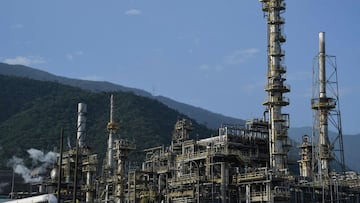Where does the gas that the United States imports come from?
Gas prices continue their historic rise leading many to question the US' reliance on foreign oil. Where does most imported gas come from and could supply be disrupted?


From 2015 to October 2020, the United States did not import crude oil from Russia. However, as the pandemic took its toll on the ability of many countries to refine crude oil, the US looked to other markets.
Oil imports from the Russian Federation began in October 2020 and peaked at around six percent of crude oil imports in August 2021 as fuel prices began to increase rapidly in the US.
Over the last year the United States has imported an average of 179 barrels of Russian oil each day. From an export perspective, the US is not a major market for Russian crude oil, representing only around four percent of the total market share.
Where does Russia export crude oil?
China is the single largest market, consuming around a third of Russian crude oil exports.
While OECD countries in Europe form around forty-nine percent of the Russian crude oil export markets, the Netherlands and Germany combined represent about a quarter the total Russian export market.
This is about Ukraine, but it is certainly also about Europe. We must defend European interests and increase our resilience by tackling our own vulnerabilities.
— Frans Timmermans (@TimmermansEU) March 8, 2022
It is abundantly clear that we are too dependent on Russia for our energy needs.
Where does the US import most of its crude oil?
According to the US Energy Information Administration, the largest import markets in the US happen to be its neighbors, Canada and Mexico. One of the motivating factors for higher reliance on geographically close markets is based on a need to keep transportation costs low.
The largest US crude oil import market is Canada which over the last eighteen months has represented around two thirds of all crude oil brought into the country. This quantity equates to around 3,600 barrels each day.
The number of barrels imported from Mexico is much smaller. Over the last year, the figure has averaged around 575 barrels or around ten percent of total crude oil imports.
Other major import markets for crude oil include Saudi Arabia, Colombia, Educator, Brazil, Nigeria, and Trinidad and Tobago.
How will the US ban on Russian oil impact global markets?
Easier this week, President Biden announced that the US would place an import ban on Russian oil and natural gas. To counter these impacts, President Biden said that the US and allies would release around sixty million barrels of oil from their strategic reserves; more than half of which will come from the United States. President Biden has also reached out to leaders of OPEC states asking them to increase production to counter loses that may be seen in Russia. So far, OPEC has made no large commitments, but will move forward with a planned supply increase in April. However, this increase is not expected to reach the levels that would be needed as shortages are felt across markets.
The environmental cost of our oil dependence
To the dismay of many environmentalists, oil remains the lifeblood of the global economy. As prices of crude oil surge, the White House has release projections that show the US plans to increase its oil production in the coming years.
This comes as the International Panel on Climate Change has released, yet another, jarring report showing that climate change is already having extremely damaging consequences on human health. Climate scientists are now saying that without a massive decrease in greenhouse gas emissions, there is less than a fifty percent chance of global climate temperatures staying under 1.5°C in the near term. This level of temperature increase is considered as critical to avoid unspeakable damage and harm to people and ecosystems around the world.
The most recent report from the United Nations Intergovernmental Panel on Climate Change (@IPCC_CH) warns that the climate emergency is at risk of becoming an imminent disaster for human civilization, affecting billions of people. Story via @livingonearth https://t.co/CchCJkbLbA
— The World (@TheWorld) March 14, 2022
Europe plans to decrease its energy dependence on Russia
In light of the Russian invasion of Ukraine, the Commission of the European Union has stated that the organization will take steps to decrease its dependency on Russian energy.
"We must become independent from Russian oil, coal and gas. We simply cannot rely on a supplier who explicitly threatens us," said Ursula van der Leyden, President of the European Commission. One avenue that the EU will focus on is increasing the production and supply of renewables energies sources and making its energy system more efficient.
Related stories
However, in the short term the EU block plans to decrease dependency on Russia by increasing imports of natural gas from the United States. Executive Vice-President for the European Green Deal has sent mixed messages that relate to various time lines under which the EU block could reduce its dependence.
In the long-run, Timmermans has said the EU must "tackle our vulnerabilities and rapidly become more independent in our energy choices" by dashing towards "renewable energy at lightning speed." But as the global trade system comes under greater stress, the EU will begin to reduce its dependence by replacing 100 billion cubic meters of natural gas by the end of the year through the increase of imports from the United States and possibly Qatar.
